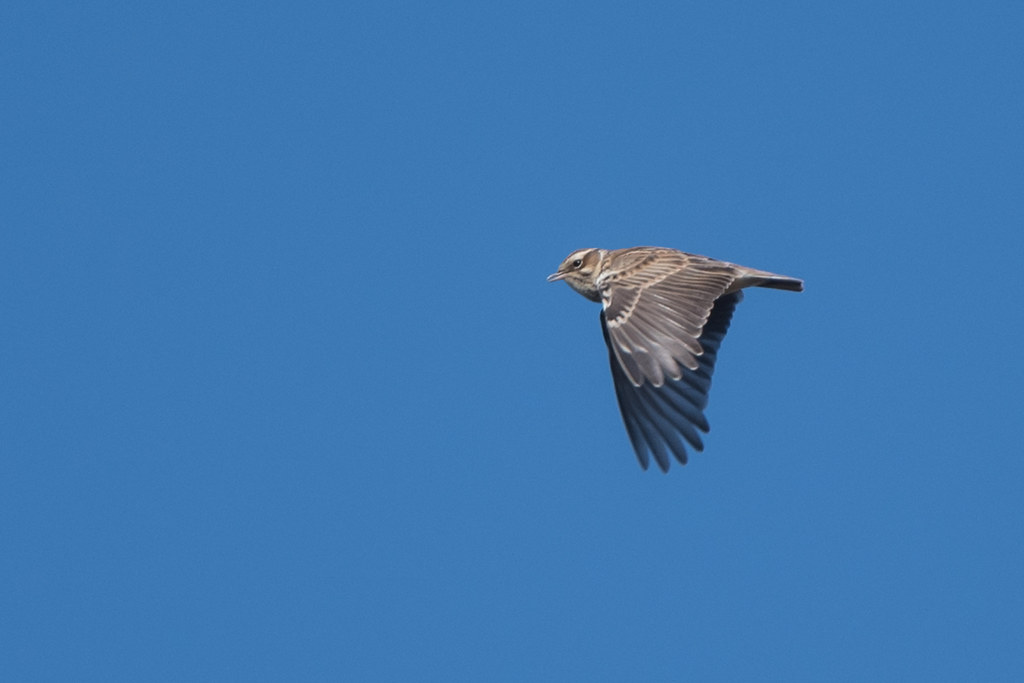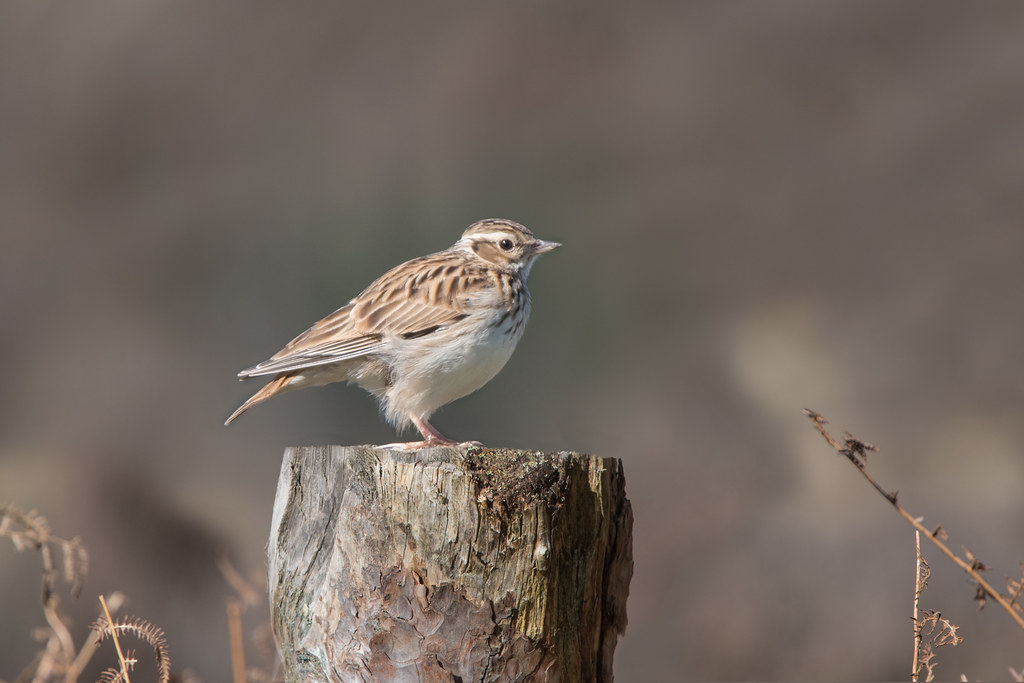
Tim writes: Woodlark is a rarer cousin of Skylark that inhabits heathlands and young forestry plantations mainly in the south. They like light, sandy, free-draining soils too, and lots of bare ground where they feed. So despite the name, they are not a woodland bird. Though unlike Skylark, Woodlark does perch in trees.
A bit like Reginald Perrin, Woodlark has experienced a fall and rise. At the time of the second BTO Breeding Atlas (1988-91) the population had sunk to its lowest ebb with just 73 10km squares occupied which was a 60% range contraction since the first breeding Atlas (1968-72) and the species was duly added to the red list. But since then many mature forestry plantations were felled, which created open ground, and the 1987 hurricane felled many trees, particularly on light sandy soils. And we mustn’t forget targeted conservation work to manage heathland and create bare ground specially for Woodlarks. The effects were spectacular on Woodlark numbers. A national survey in 1997 revealed an overall six fold increase since 1986. Some examples of changes over this 11 year period were even greater, such as going from fewer than 6 to more than 90 pairs in Dorset, 6 to 60 in Berkshire and 1 to 30 in Nottinghamshire, which is where I photographed this individual. Historically it has had ups and downs too in Britain possibly linked to Myxomatosis which decimated the rabbit population which allowed vegetation to become too long. Cold winters undoubtedly took their toll as well, because Woodlark is a resident species, so does not migrate south for winter.
Because they do not breed near me in the Pennines I had to make a special journey to try and photograph them. Nottinghamshire was my nearest sizeable population, though I did not find them particularly cooperative. Males seem to spend hours on end high in the sky singing their beautiful yodelling song, only occasionally coming to land, and in unpredictable places. But after a few hours I managed a series of shots including this subtle beauty. They are quite similar to Skylarks, but here you can see the short tail and black-and-white mark on the wing, the short crest, and the long, pale eyebrows that meet at the back. Well worth the journey and effort I thought.

Great post, pix and bird. Thanks Tim.
“Though unlike Skylark, Woodlark does perch in trees.”
Yes, it’s always interesting to compare closely related species like the Woodlark and Skylark. David Lack wrote a few lines about them in his classic book, the Ecological Isolation in Birds. He points out the way the relative lengths of their hind claws parallel those of the Tree and Meadow Pipits. The Woodlark and Tree Pipit, in order to perch, have much shorter claws than their non-perching congeners. But the really gripping bit to this story is that the difference is smaller in the Woodlark, a bird which perches much less often than the Tree Pipit.
David Lack — who else can turn a boring subject like claw length ratios into a riveting one?
Lovely photos, Tim – and a good account of the ups and downs of this understed bird. Woodlark are definitely fragile because they use such ephemeral habitat, and because it’s difficult to produce artificially – they walk around n bare ground picking insects off clumps of vegetation. Mowing and creating a low sward simply doesn’t work for them.